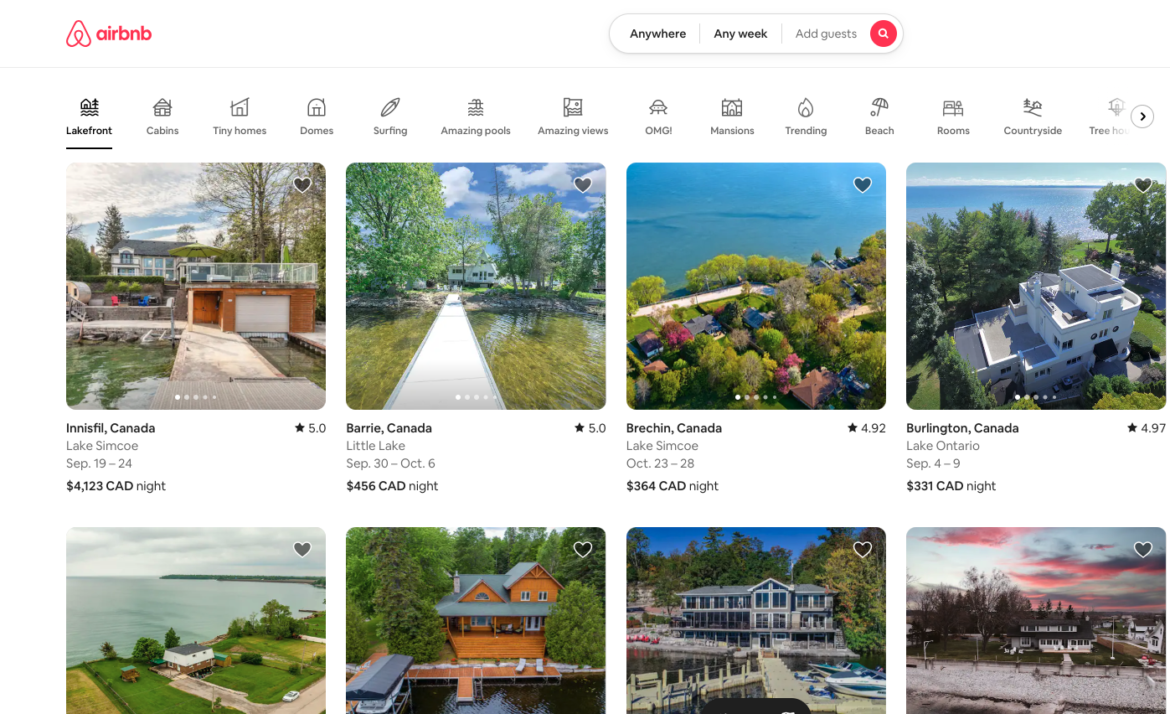We catch up with the rental app’s marketing boss, Hiroki Asai, to hear why he shifted its strategy so dramatically and how he’s confident it has now found a winning long-term formula.
An Airbnb ad launched today spotlights the perks of staying in one of its rentals rather than traditional hotels. In one of three playful, animated short films, a group of friends is ready for a relaxing, kiddo-free vacation – only to find the hotel pool teeming with screaming children. Luckily, the travelers find solace in a picture-perfect thatched-roof Airbnb with a peaceful, private pool. “Get an Airbnb and get a place to yourself,” a voiceover chimes.
The spot is part of a new brand campaign that will roll out across the US, the UK, Canada, Australia and a handful of other markets across the globe throughout the coming weeks.
It comes on the heels of the brand’s multichannel spring campaign, which spotlighted Rooms – Airbnb’s newly-rebranded offering of private rooms within shared homes – by telling the story of individual hosts from across the globe and the unique experiences that can come with a Rooms stay.
These and other Airbnb marketing efforts of the last few years evidence a broader paradigm shift in the way the brand aims to connect with and engage audiences everywhere. It’s a shift that began with the Covid-19 pandemic.
A strategic shift
When the pandemic upended the travel and tourism industry in 2020, Airbnb lost about 80% of its business overnight. As Brian Chesky, the company’s chief executive, told entrepreneur and ‘This Week in Startups’ podcast host Jason Calacanis: “We were staring into the abyss.”
Although the existential disruption may have easily sunk the business, Chesky and his team were determined to tackle the crisis opportunistically.
The challenge wasn’t in the remit of product, operations or finance alone. Marketing, too, would play a critical role. “It basically turned the company upside down – but it was also an opportunity to reimagine Airbnb a little bit and take a look at what the next iteration of Airbnb would be,” chief marketing officer Hiroki Asai tells The Drum.
The company’s founders, including Chesky, chief strategy officer Nathan Blecharczyk and chairman Joe Gebbia, sought to make Airbnb “a much simpler company” says Asai – one that was “creatively driven,” with brand and design at the heart of the corporate story.
For Asai, who has been at Airbnb for about three and a half years, the approach felt natural. The executive began his career as a graphic designer before spending 18 years on the marketing team at Apple. A core focus on design and brand-level storytelling is in his DNA.
Pre-pandemic, Airbnb’s marketing strategy was primarily performance-driven, with much of the brand’s marketing budget dedicated to digital advertising. But when the pandemic flipped the business on its head, performance marketing wasn’t delivering what the brand needed. Asai tells The Drum: “The problem was that Airbnb wasn’t able to put its own message out into people’s minds and out into the market, so the messages were being driven by reactive PR and comms and basically what the world and what social media was talking about. Airbnb kind of lost control of the brand a little bit – and of the message and the narrative.” To regain control of the narrative, Airbnb decided to dial back its investment in performance marketing significantly.
Instead, Asai says, the plan was to “go back to the core of what Airbnb was about – which is about core hosts, primary homes and guests.” The brand poured marketing dollars into communicating this message with big, bold brand campaigns instead of performance-driven buys.
It was a much-needed strategic adjustment, in Asai’s view. “As Airbnb was growing, pre-pandemic, it was losing its differentiation. There were a lot of competing options for travelers out there and Airbnb … was losing its uniqueness. It was losing its sense of brand and who it was. So, coming out of the pandemic, the decision was to really focus on the core business and to focus on creating experiences, creating features and creating a product … to differentiate ourselves – and then to use brand to actually communicate and teach people what those differences are.”
Keeping product and brand in dialogue at all times
The brand began to invest deeply in…


